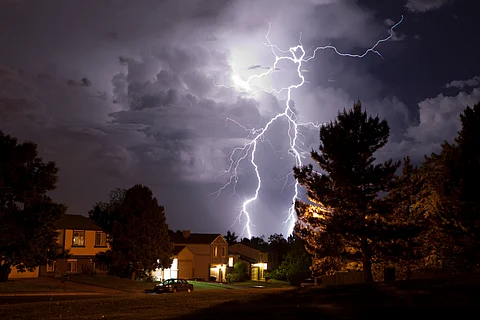

Soil moisture levels could serve as an early warning signal for severe clusters of thunderstorms that cause flash floods and landslides in regions such as India, West and Central Africa, South America, and parts of the United States and China, according to new research published in the journal Nature Geoscience.
The study focused on mesoscale convective systems (MCS) — large clusters of thunderstorms that can span areas bigger than England and travel hundreds of kilometres. These systems often bring intense rainfall, causing widespread damage to lives, livestock and infrastructure. In tropical regions, MCSs accounted for 50 to 90 per cent of total rainfall, the researchers noted.
Regions identified as hotspots for MCSs included West and Central Africa, northern India, Argentina, China and the United States Great Plains. A recent example cited was the March 2024 thunderstorm in West Bengal, which reportedly damaged around 800 homes, injured 300 people and led to five deaths.
Traditionally, storm forecasting relied heavily on atmospheric data. However, the study adopted a different approach, examining land surface conditions — particularly soil moisture levels — as a predictive tool. The researchers argued that shifts in soil moisture could be detected two to five days before storm formation, offering critical lead time for early warnings in vulnerable areas.
“Understanding how soil moisture influences storm activity, and how this may change in the future, will be essential for more accurate short-term forecasting to warn communities about approaching storms, as well as making longer-term projections,” the researchers wrote.
An early warning system is defined as an integrated system of hazard monitoring, forecasting and prediction, disaster risk assessment, communication and preparedness activities systems and processes that enables individuals, communities, governments, businesses and others to act in time to reduce risks, according to the United Nations Office for Disaster Risk reduction.
Previous studies, according to the paper, show that land surface processes influence MCS drivers. However, there are knowledge gaps. So, the researchers analysed two decades of satellite data and soil moisture patterns across West and southern Africa, India, and South America, and ran high-resolution computer models.
The researchers found that atmospheric changes caused by contrasting soil moisture levels over hundreds of kilometres increase the area and amount of rainfall by 10 to 30 per cent, depending on the storm’s size and location.
A larger contrast in air temperatures is also caused by larger variations in moisture content between drier and wetter regions over a greater distance. This can result in more significant changes in wind direction or speed, which can cause turbulence that makes storms more powerful and distribute more rainfall over a wider area, the scientists said.
This pattern was found to be true in West and southern Africa, India and South America. This connection between soil moisture contrasts and wind circulations also showed up in China, Australia and the US Great Plains. Although more research is necessary, the researchers believe that this association might also exist in other areas impacted by mesoscale convective systems.
“Meteorologists tend to focus on atmospheric conditions to predict weather patterns. But, as a growing amount of evidence shows, we should also consider what is happening on the land surface to improve forecasting,” said study co-author Cornelia Klein, a meteorologist at the United Kingdom Centre for Ecology & Hydrology, said in a statement.